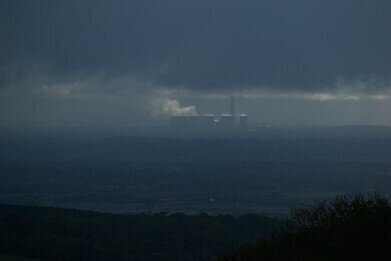Air clean up
The History of UK Air Pollution! Looking Back through Smog Tinted Glasses
Nov 29 2014
The effects of air pollution have been a concern for city dwellers since the thirteenth and fourteenth centuries. In 1273, the use of coal was prohibited, then in 1306 a law was passed to stop the use of certain types of coal due to complaints about air quality in London. Fast-forward 740 years, and the quality of air in London is still a concern. The catalyst for recent changes started in the 1950s — with The Great Smog.
Fog and Smoke
During and after the Industrial Revolution, the major cities in Britain experienced a type of air pollution that became known as smog. Smog is caused when weather conditions caused the sooty particles released in the atmosphere — due to coal combustion — to become trapped in fog. Although the incidence of major smogs was in decline in the twentieth century, they still happened.
In 1952, an anticyclone settled over London; this caused the wind to drop and the air to become damp, a thick fog formed. This turned into smog as sooty particles became trapped. The anticyclone and smog lasted for five days — causing an estimated 5000 extra deaths. Something had to be done.
Clean Air Act 1956
With a concerned population asking questions, the UK Government introduced the Clean Air Act in 1956. This introduced smokeless zones — where only smokeless fuels could be burnt — to help control the smoke and particles released into the atmosphere. The act also reduced other atmospheric pollutants, such as sulphur dioxide, too. Along with an accompanying act — Clean Air Act: Tall Chimneys (1968) — air pollution in urban areas significantly reduced. Changing fuel use and better urban planning meant that:
- Solid fuel use dropped, with more electric and gas used — thus reducing domestic emissions.
- Cleaner coal was used with a reduced sulphur content.
- Heavy industry was in decline, and
- Taller chimneys meant that the smoke and particles were emitted higher in the atmosphere, and so were more easily dispersed.
So, problem solved, throw away the smog mask. Take a big deep breath and go for a run.
Fit to Breathe?
Wait. Best check the air pollution warnings before you get changed. In April 2014, an air pollution warning was issued for parts of England. The problem was blamed on dust from the Sahara and local and European emissions. It may not be the smog of industrial Britain, but air pollution still causes deaths in twenty-first century Britain.
It is estimated that up to 29,000 deaths in Britain each year may be attributed to air pollution. The most hazardous of which are the fine particulates emitted from many vehicles. The other significant hazard is nitrogen dioxide, especially for those living close to major roads — with the pollutant linked with asthma in children. Another study discussing the effect emissions have on childhood development is Air pollution exposure 'increases autism risk'.
It might be time to reach for your smog mask again!
Events
Apr 08 2025 Targi Kielce, Poland
Apr 08 2025 Bahrain
Apr 10 2025 Beijing, China
Apr 10 2025 Beijing, China
Apr 15 2025 Moscow, Russia














